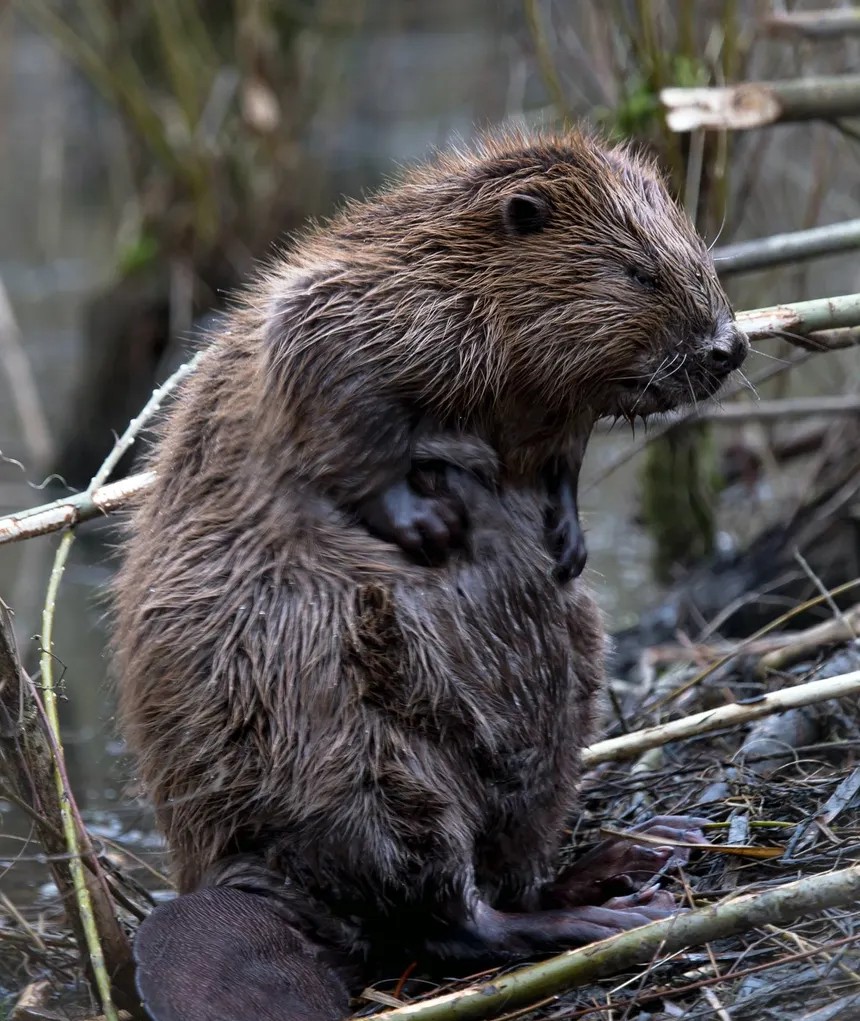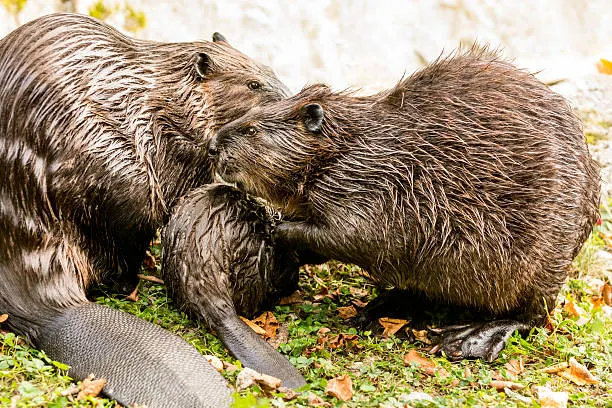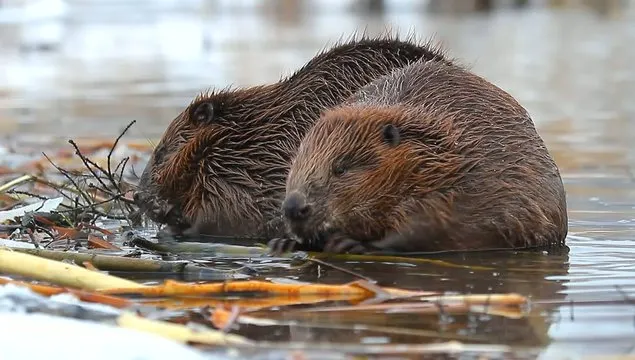“Busy Builders of the Wild: Everything You Need to Know About Beavers”

Beavers are among the most fascinating and industrious animals in the animal kingdom. Known for their remarkable ability to build dams, lodges, and canals, beavers dramatically reshape their environments. As semi-aquatic rodents, they play a crucial ecological role, creating wetlands that support countless other species. In this article, we’ll explore every aspect of the beaver—from its biology and behavior to its environmental impact, history with humans, and conservation status.
1. What Is a Beaver?
Beavers are large, herbivorous rodents from the genus Castor. There are two living species:
- North American beaver (Castor canadensis)
- Eurasian beaver (Castor fiber)
They are the second-largest rodents in the world (after the capybara) and are well adapted to aquatic life.
2. Where Do Beavers Live?
Beavers live across much of North America, Europe, and parts of Asia. They prefer:
- Freshwater habitats: rivers, streams, ponds, and lakes
- Forested or wooded areas near water
- Areas with plenty of trees, especially aspen, willow, birch, and poplar
3. Physical Characteristics
- Size: 30–60 pounds (14–27 kg); up to 4 feet (1.2 m) long
- Tail: Broad, flat, and paddle-shaped, used for swimming, balance, and warning slaps
- Fur: Thick, waterproof, and brown
- Teeth: Long, orange, ever-growing incisors that cut wood
- Feet: Webbed hind feet for swimming; front paws are dexterous for digging and carrying materials
4. Why Do Beavers Build Dams?
Beavers build dams to create ponds, which provide:
- Safe, deep water to escape predators
- A stable environment for their lodges
- Protection for access to underwater entrances
- A suitable habitat for raising young and storing food
Dams are built using branches, logs, mud, and stones, and they can alter entire ecosystems.
5. Lodges and Living Spaces
In the middle of their man-made ponds, beavers build lodges:
- Dome-shaped structures made of sticks and mud
- Entrances located underwater for safety
- Interior includes a dry living chamber above the waterline
Lodges are used for sleeping, raising young, and shelter during winter.
6. Diet and Feeding Habits
Beavers are herbivores and primarily eat:
- Bark and cambium (the soft inner layer of trees)
- Leaves, aquatic plants, twigs, and roots
In winter, they cache branches underwater near their lodges to feed on when the surface freezes.
7. Beaver Behavior and Social Structure
- Live in monogamous family units called colonies
- Colonies include parents, kits (young), and yearlings
- Very territorial—mark boundaries with scent mounds and castoreum (a musky secretion)
They communicate with each other using vocalizations, tail slaps, and scent markings.

8. Beavers as Ecosystem Engineers
Beavers are considered a keystone species because:
- Their dams slow water flow and reduce erosion
- Ponds and wetlands created by beavers support amphibians, fish, birds, and insects
- Dead trees from flooding provide habitat for woodpeckers and owls
- They improve water quality by trapping sediments
Their activities can rejuvenate drought-prone areas and restore biodiversity.
9. Beaver Reproduction and Lifespan
- Mating season: January to March
- Gestation: About 3.5 months
- Litter size: 2–4 kits, born between May and June
- Kits stay with parents for about 2 years
- Lifespan in the wild: 10–12 years; longer in captivity
10. Predators and Threats
Natural predators include:
- Wolves
- Coyotes
- Bears
- Lynxes
- Eagles (for kits)
Human threats:
- Habitat loss
- Trapping for fur
- Dam removal and land development
Beavers once faced near-extinction in many regions due to overhunting for fur and castoreum, but their populations are recovering due to conservation efforts.
11. The Beaver’s Role in Human History
- Central to the North American fur trade in the 17th–19th centuries
- Symbol of Canada—appears on currency and national emblems
- Valued for their fur, meat, and castoreum (used in perfumes and medicines)
Their engineering skills also inspired early dam-building techniques and water management systems.
12. Beaver Conservation and Reintroduction
In recent decades:
- Beavers have been reintroduced to areas where they were extinct (like parts of the UK and Western Europe)
- Conservationists support beaver restoration for flood control, biodiversity, and habitat restoration
- Some farmers and developers view beavers as pests, but coexistence strategies (like flow devices) are being implemented
13. Fun and Surprising Facts About Beavers
- Their teeth are orange because of iron content, which strengthens enamel.
- Beavers can stay underwater for up to 15 minutes.
- Their homes can last for decades and be passed down through generations.
- Beaver dams can be seen from space—one in Alberta, Canada is over 850 meters (2,800 feet) long!

Conclusion
Beavers are not just clever builders—they are ecological architects that shape landscapes, benefit biodiversity, and inspire human innovation. These remarkable rodents exemplify how one species can dramatically transform an environment for the better. By understanding and protecting beavers, we also preserve entire ecosystems and the many species that rely on them.



